Abstract
Previous electrophoretic methods for the separation of tissue-specific serum alkaline phosphatases have either been unable to separate the liver and bone enzymes or have been too involved for routine clinical use. A relatively simple electrophoretic method is described which separates placental, liver, bone, and intestinal alkaline phosphatases in serum. The clinical applications of such a method appear to be mainly in the differential diagnosis of liver and bone disease, especially in complicated hypercalcaemic states where tumour metastases can affect both bone and liver, in children, and possibly in cirrhosis of the liver.
No differences in electrophoretic mobility could be seen between zymograms of different diseases affecting the same organ. Patients presenting with hepatic cirrhosis all showed a marked serum intestinal alkaline phosphatase zone as well as a liver zone on electrophoresis. An intestinal zone was not present with other types of hepatobiliary disease.
The heterogeneity of total serum alkaline phosphatase activity in normal subjects is demonstrated, alkaline phosphatases of liver and bone, and sometimes of intestine being present in normal serum.
Results obtained in women in the last trimester of pregnancy and in old people are also discussed.
Full text
PDF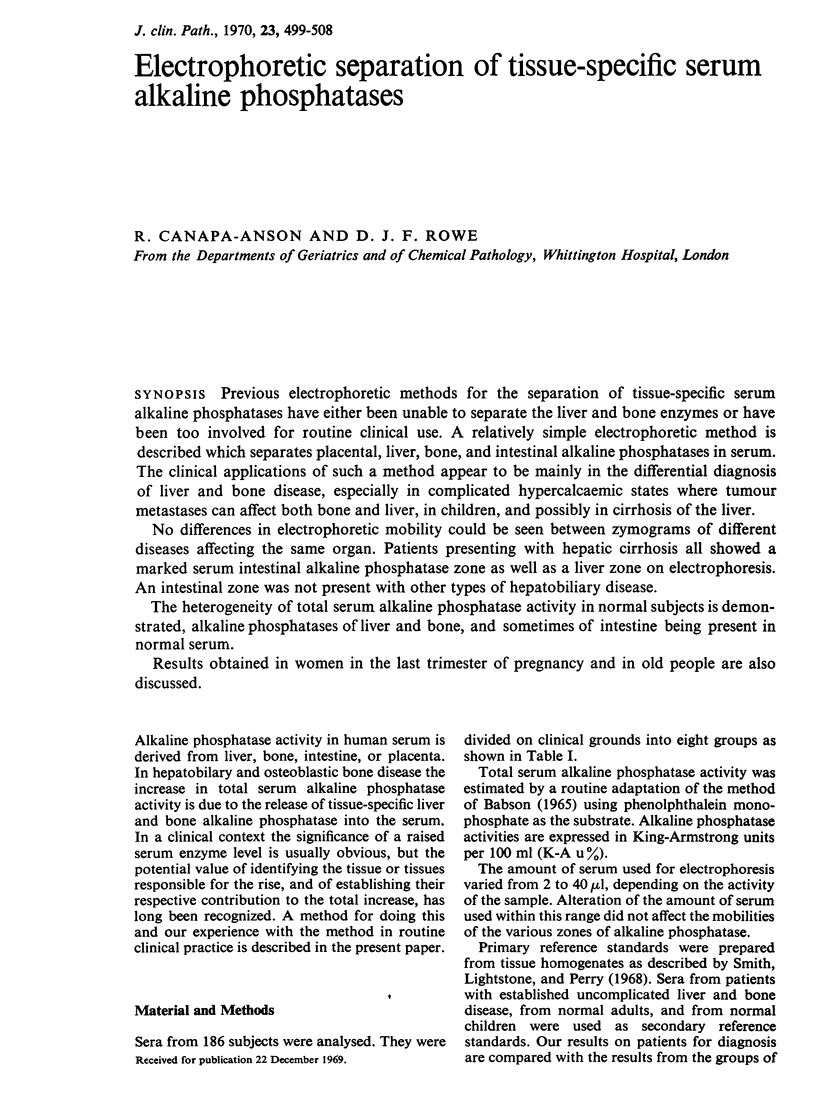
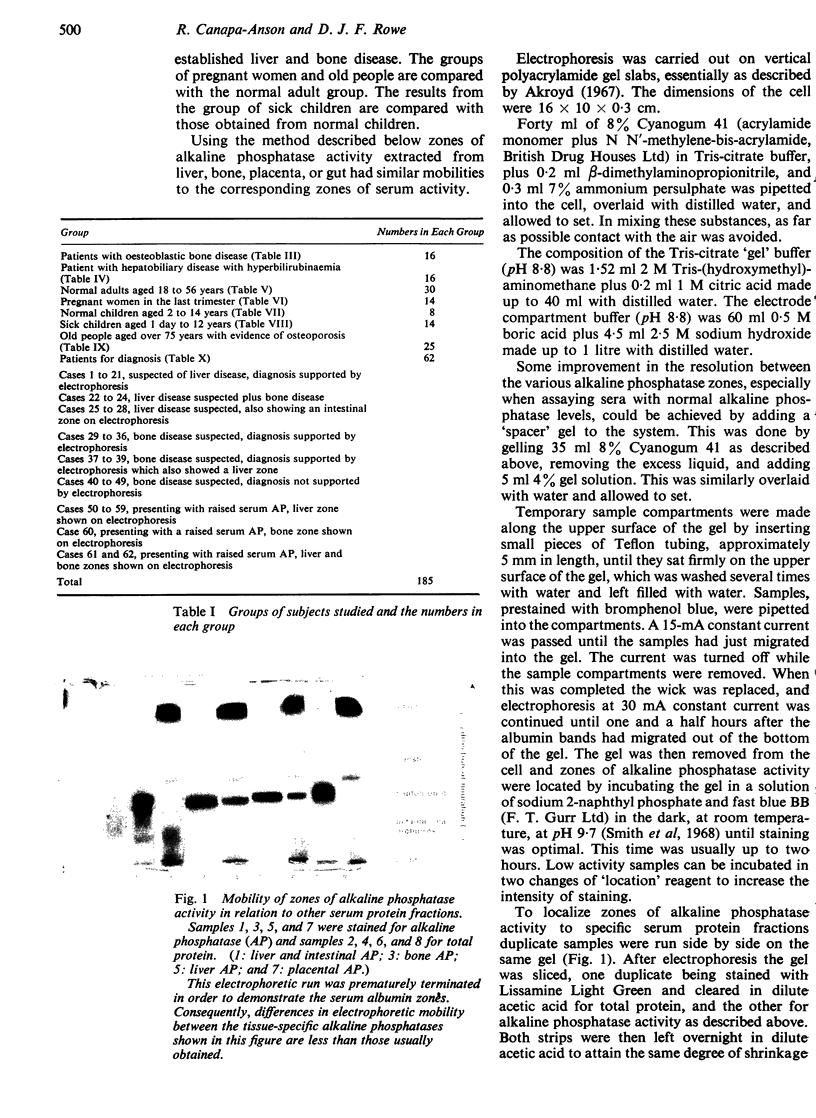
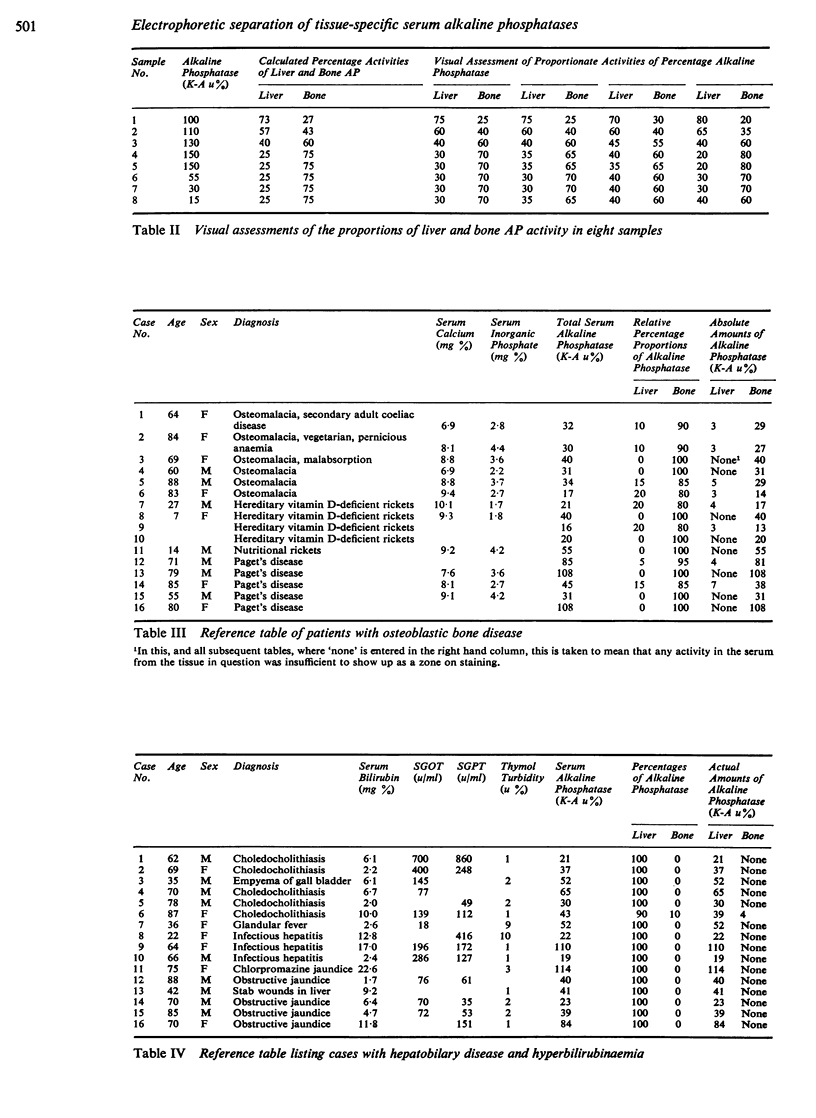
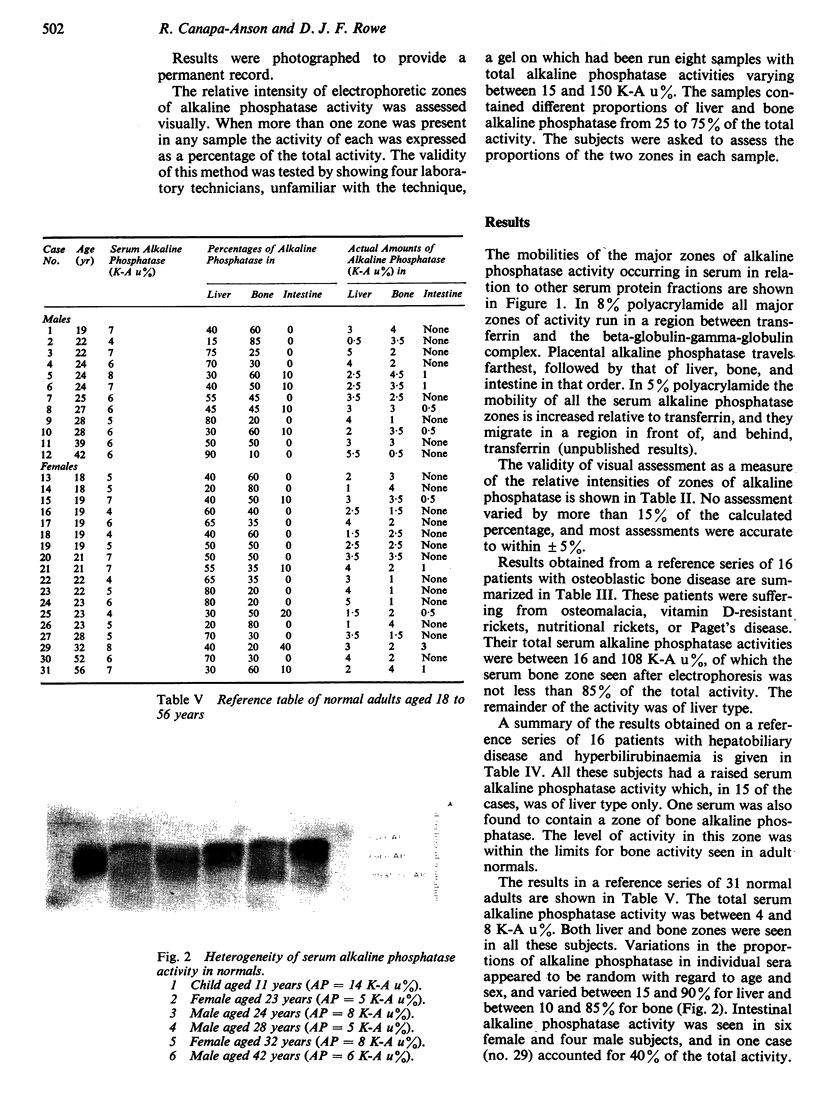
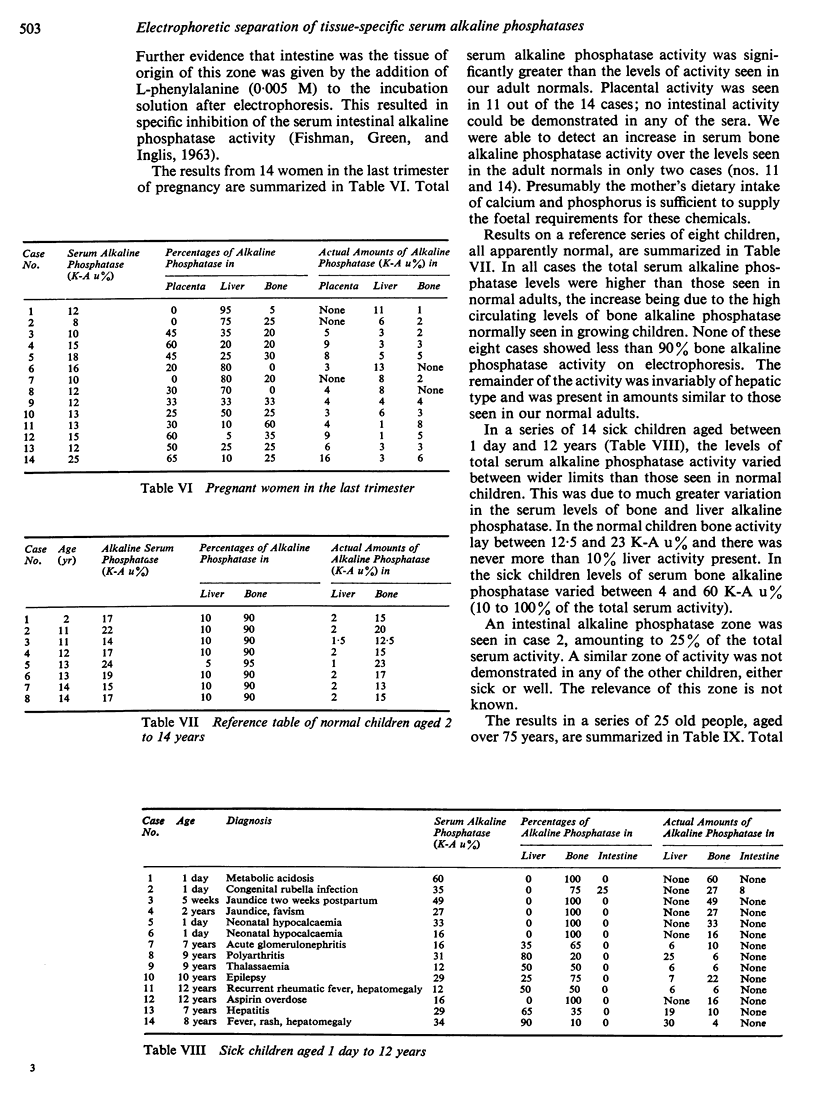
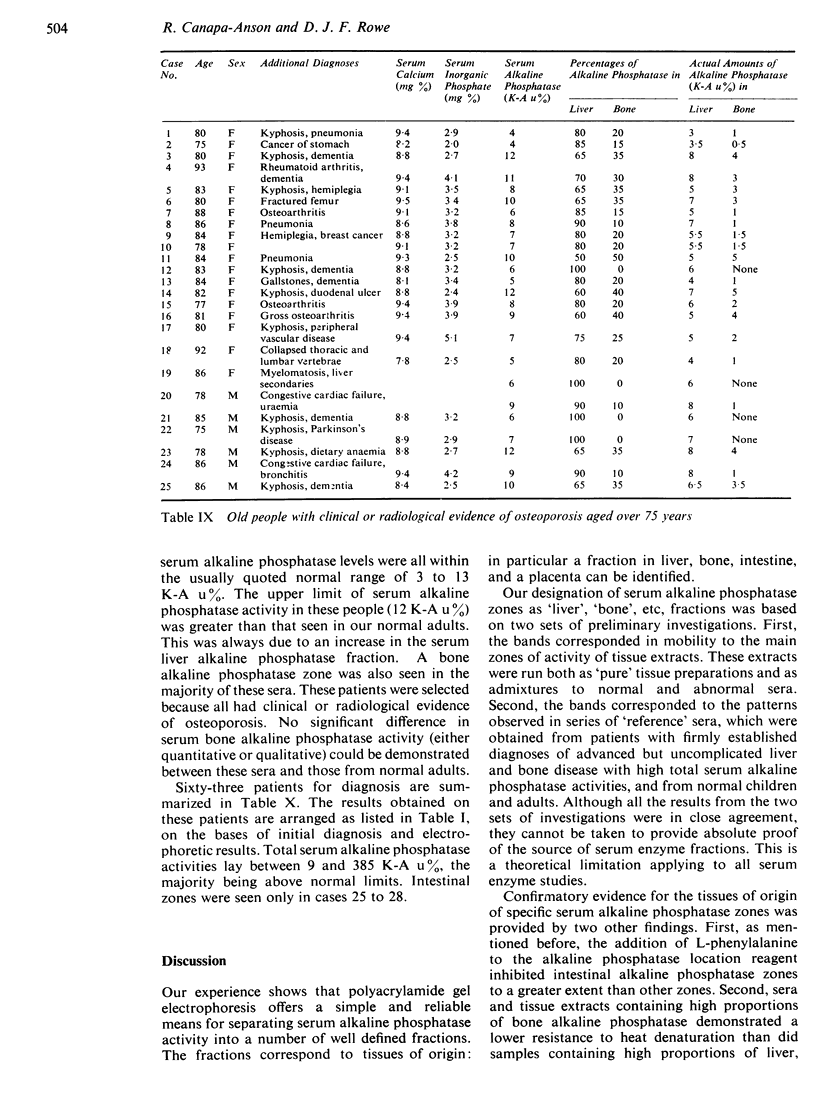

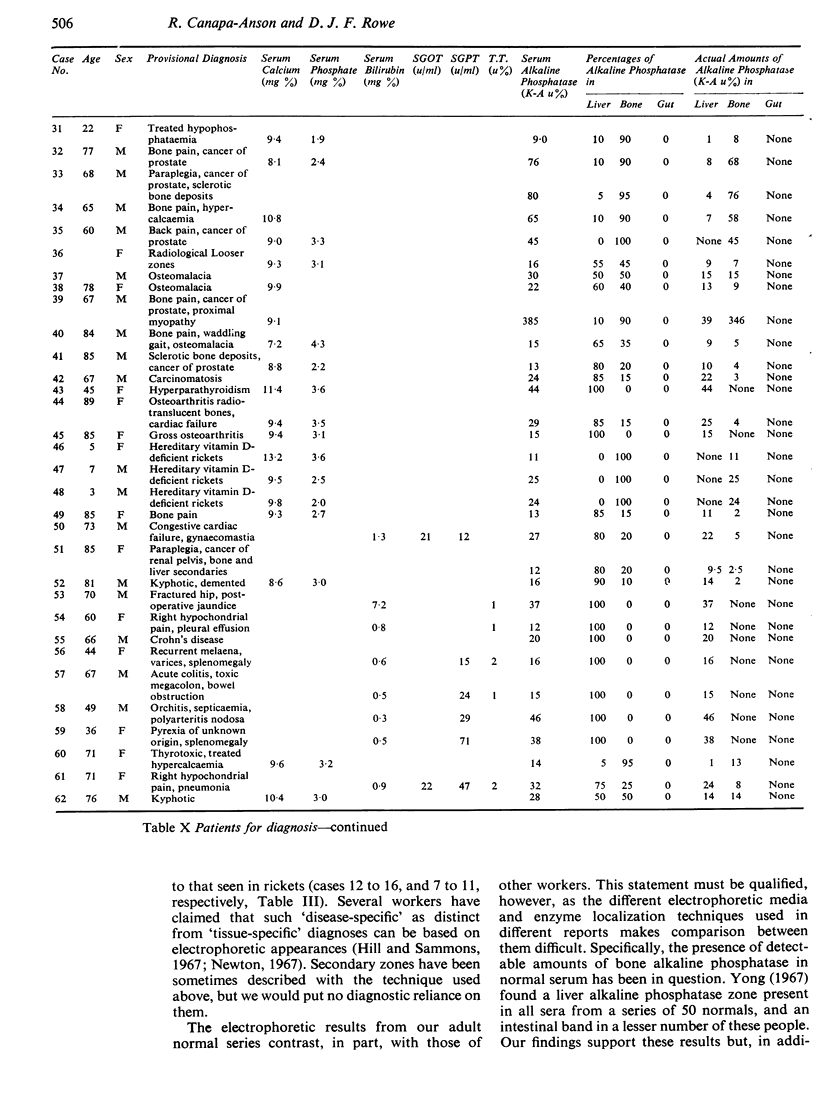
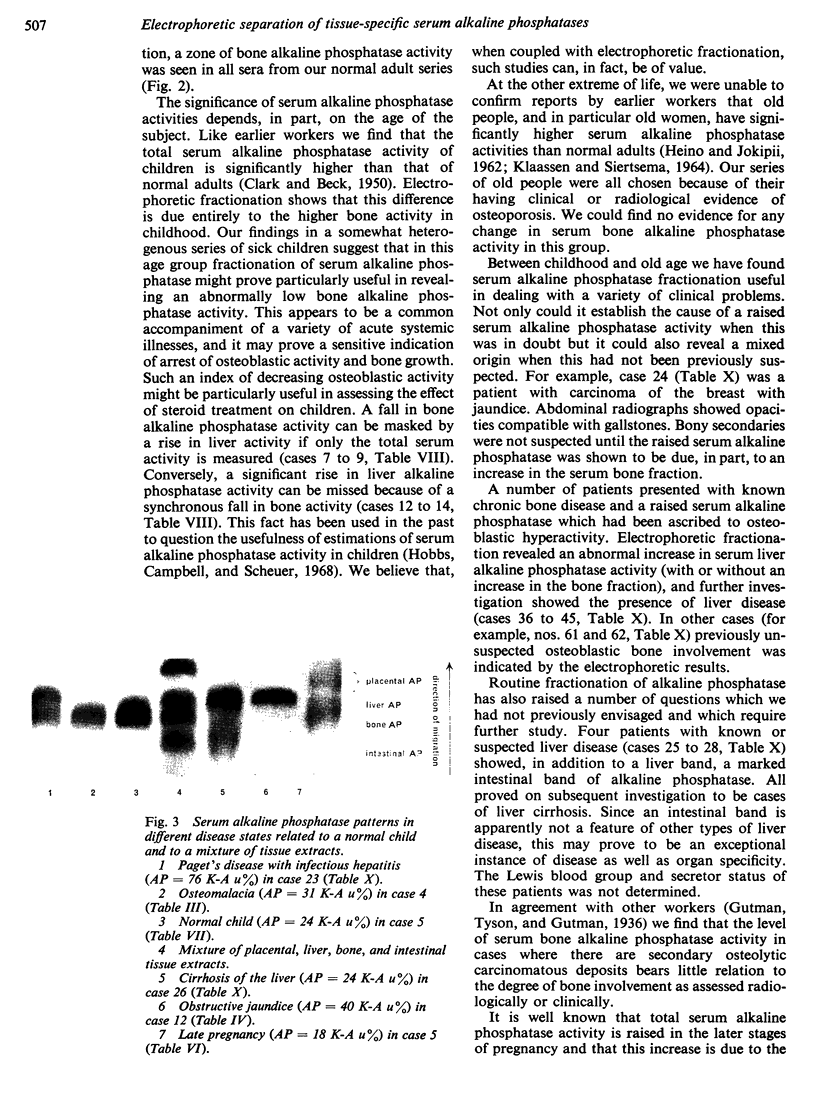
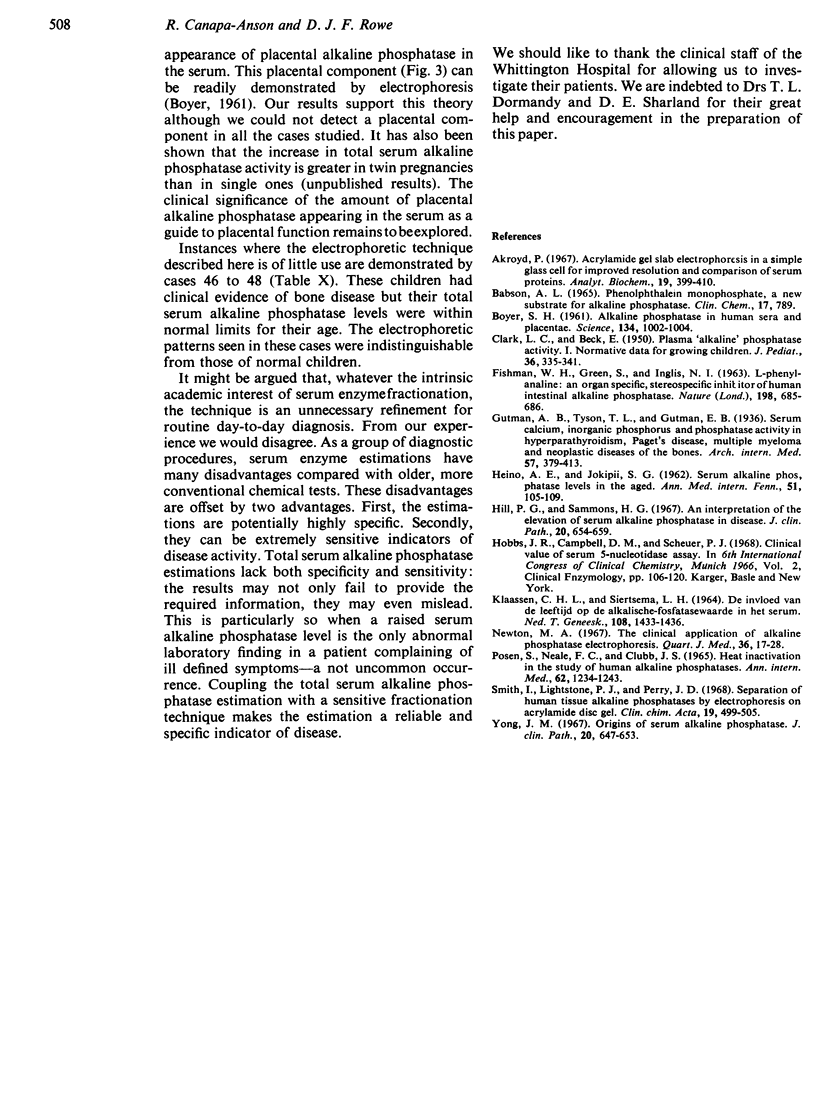
Images in this article
Selected References
These references are in PubMed. This may not be the complete list of references from this article.
- Akroyd P. Acrylamide gel slab electrophoresis in a simple glass cell for improved resolution and comparison of serum proteins. Anal Biochem. 1967 Jun;19(3):399–410. doi: 10.1016/0003-2697(67)90229-1. [DOI] [PubMed] [Google Scholar]
- Boyer S. H. Alkaline Phosphatase in Human Sera and Placentae: Starch gel electrophoresis reveals many phosphatase components including a polymorphism in placentae. Science. 1961 Oct 6;134(3484):1002–1004. doi: 10.1126/science.134.3484.1002. [DOI] [PubMed] [Google Scholar]
- CLARK L. C., Jr, BECK E. Plasma alkaline phosphatase activity; normative data for growing children. J Pediatr. 1950 Mar;36(3):335–341. doi: 10.1016/s0022-3476(50)80103-8. [DOI] [PubMed] [Google Scholar]
- FISHMAN W. H., GREEN S., INGLIS N. I. L-phenylalanine: an organ specific, stereospecific inhibitor of human intestinal alkaline phosphatase. Nature. 1963 May 18;198:685–686. doi: 10.1038/198685b0. [DOI] [PubMed] [Google Scholar]
- HEINO A. E., JOKIPII S. G. Serum alkaline phosphatase levels in the aged. Ann Med Intern Fenn. 1962;51:105–109. [PubMed] [Google Scholar]
- Hill P. G., Sammons H. G. An interpretation of the elevation of serum alkaline phosphatase in disease. J Clin Pathol. 1967 Jul;20(4):654–659. doi: 10.1136/jcp.20.4.654. [DOI] [PMC free article] [PubMed] [Google Scholar]
- KLAASSEN C. H., SIERTSEMA L. H. DE INVLOED VAN DE LEEFTIJD OP DE ALKALISCHE-FOSFATASEWAARDE IN HET SERUM. Ned Tijdschr Geneeskd. 1964 Jul 25;108:1433–1436. [PubMed] [Google Scholar]
- POSEN S., NEALE F. C., CLUBB J. S. HEAT INACTIVATION IN THE STUDY OF HUMAN ALKALINE PHOSPHATASES. Ann Intern Med. 1965 Jun;62:1234–1243. doi: 10.7326/0003-4819-62-6-1234. [DOI] [PubMed] [Google Scholar]
- Smith I., Lightstone P. J., Perry J. D. Separation of human tissue alkaline phosphatases by electrophoresis on acrylamide disc gels. Clin Chim Acta. 1968 Mar;19(3):499–505. doi: 10.1016/0009-8981(68)90278-7. [DOI] [PubMed] [Google Scholar]
- Yong J. M. Origins of serum alkaline phosphatase. J Clin Pathol. 1967 Jul;20(4):647–653. doi: 10.1136/jcp.20.4.647. [DOI] [PMC free article] [PubMed] [Google Scholar]





